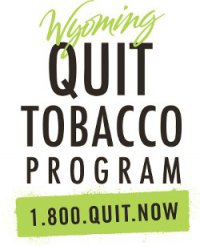Conclusions
The data for WQTP enrollees who completed the follow-up survey between January and June 2016 show that most program participants enrolled to get help with quitting cigarettes. Most enrollees used NRTs and/or the quitline. About a quarter (26%) of enrollees reported being quit for at least 30 days. This quit rate is identical to the 30-day quit rate reported in the previous semiannual report (WYSAC, 2016). The highest 30-day quit rate was experienced by those who used coaching and medication (29%). Satisfaction with WQTP was high: 76% of enrollees reported being very or mostly satisfied with the program, and the majority (64%) had recommended the WQTP to someone else.
The majority (69%) of respondents reported no problems with the WQTP. Among those who reported difficulty, contacting the program by telephone was the most problematic, followed by acquiring NRT products.
WYSAC analyzed follow-up data for four priority populations: those who used ENDS, those who reported mental health conditions, those who participated in the pregnancy program, and those who participated in the AICTP. More than half (59%) of enrollees had used ENDS in their lifetime. Of these, 81% had used them to quit or cut-down on other tobacco even though they are not approved as cessation aids by the FDA. Usage rates for program components and 30-day quit rates were comparable between enrollees reporting mental health conditions and enrollees reporting no such conditions. The sample sizes for those in the pregnancy program and the AICTP are too small to draw conclusions or to generalize to other WQTP enrollees.
The follow-up data show that WQTP program components successfully help enrollees quit. The increased use of these components, by a combination of increased enrollment and increased use of components by enrollees, would likely increase the overall success of the program.


